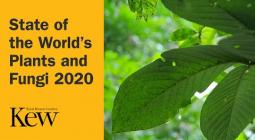New Research on Earth's Worst Extinction Event Provides Insight Into Today’s Climate Crisis

Scientists say the planet is facing its "sixth mass extinction" and human activity is to blame. But as ecosystems change at unprecedented rates, predicting what future life on Earth could look like may seem unimaginable.
Understanding history's worst mass extinction event could provide insight on what lies ahead — and offer a warning if global action isn't taken.
That's why an international team of researchers looked back 252 million years, during the end of the Permian period when a severe extinction event, coined as the "The Great Dying," erased 19 out of every 20 species on Earth, the California Academy of Sciences reported.
For the first time, in a study published Wednesday, researchers identified what made "The Great Dying" more severe than other extinction periods. The scientists studied this period because of similarities in crises that occurred then and are occurring now — "namely extinction following the massive release of carbon dioxide and other greenhouse gases into the atmosphere," they wrote, adding this period also faced global warming, acid rain and acidification.
But unlike other mass extinctions throughout history, species in the end-Permian period struggled to recover, possibly for 10 million years, the California Academy of Sciences reported. To find out why, the scientists recreated food webs, sampled from north China, spanning the Permian and Triassic periods, which showed how a single region responded to ecosystem collapse.
"By studying the fossils and evidence from their teeth, stomach contents, and excrement, I was able to identify who ate whom," lead author and Academy researcher Yuangeng Huang told the California Academy of Sciences. "It's important to build an accurate food web if we want to understand these ancient ecosystems."
By tracking food webs during this period, the scientists saw that when animals died, nothing replaced them, creating an "unbalanced ecosystem," according to the California Academy of Sciences.
"We found that the end-Permian event was exceptional in two ways," professor Mike Benton from the University of Bristol told the California Academy of Sciences. "First, the collapse in diversity was much more severe, whereas in the other two mass extinctions there had been low-stability ecosystems before the final collapse. And second, it took a very long time for ecosystems to recover."
The new study comes at the same time as two other groundbreaking studies that also draw comparisons between "The Great Dying" and the current day. In one of these studies, scientists developed a record of ocean acidity, which allowed them to track how "The Great Dying" occurred, CBS reported.
The extinction didn't happen all at once but instead occurred as a series of events, from volcanic activity, the release of carbon gases, global warming, acidifying oceans, fire and erosion, spanning a million years, professor Uwe Brand, a geoscientist from Brock University in Canada, who was involved in the ocean record study, told CBS News.
"These are not individual and separate causes, but they all acted together, they acted in concert, and that is why I call it the perfect storm," Brand told CBS News. "You got hit on this side with temperature, on this side with acidification and then finally the knock-out punch came from deoxygenation."
While the possibility of avoiding this same ecological collapse may seem elusive, conversations on how to respond are occurring, even at a global level.
"Human well-being lies in protecting the health of the planet," Secretary-General of the United Nations António Guterres said recently, according to UN News, following the release of a report, Making Peace with Nature, which calls for urgent action to combat environmental crises. "The rewards will be immense. With a new consciousness, we can direct investment into policies and activities that protect and restore nature."
Yuangeng Huang and his team's research on food webs also shows which species recovered from "The Great Dying," providing insight as to how modern species may do the same.
"This is an amazing new result," professor Zhong-Qiang Chen of the China University of Geosciences, Wuhan told the California Academy of Sciences. "The combination of great new data from long rock sections in north China with cutting-edge computational methods allows us to get inside these ancient examples in the same way we can study food webs in the modern world."
18 March 2021
EcoWatch




